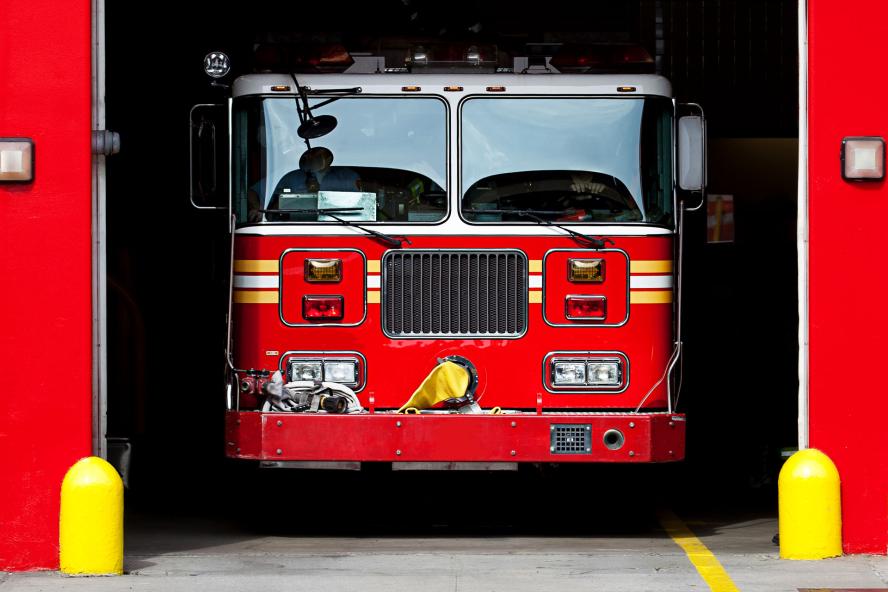Comments from the Tufts University Fire Marshal

The recent fire affecting Tufts University students is a stark reminder about the need for mindfulness and life safety and our everyday life. This fire clearly had a devastating impact on the residents (and their friends and loved ones as well), the property owners, and the neighborhood. The first responders were impacted as they risked their lives to respond and engage in a large battle to save life and property. In this case, one of our students was in imminent danger of death and needed to be rescued via ladder from an upper floor. The student did survive but had to endure smoke inhalation and other injuries.
All the occupants of this house lost belongings and suffer from the resultant impact associated with having their lives turned upside down even if temporarily. Soon this destroyed building is likely to be torn down and replaced with a new building, however the impact of this avoidable tragedy will continue to impact many people for the foreseeable future.
About the need for fire safety mindfulness:
All the hard work and sacrifice that has led to your status as a Tufts University student needs to be safeguarded as you continue your life’s journey. A fire can suddenly and viciously impair or derail your dreams and aspirations. In addition to the loss of your belongings and sense of stability, your physical and emotional wellbeing is potentially threatened by such a traumatic event as a fire. Such events are traumatic and sad no matter what caused the fire; however, if the cause is determined to have been easily preventable the losses are likely have an additional layer of emotion and regret.
Fortunately, there are simple but effective precautions that will vastly increase your likelihood of avoiding an unwanted fire or mitigating the loss resulting from an otherwise unavoidable fire. Some of these precautions include:
- Review the Tufts University Guide to Off-Campus Residence Selection Fire Safety as a reference source for information related to fire safety aspects of your living environment. I created this Guide specifically with the urban housing environment in mind, such as is commonly found in the Boston region.
- Install smoke / carbon monoxide alarms in your living space and test them regularly.
- Install a smoke / carbon monoxide alarm INSIDE your bedroom in addition to the smoke / carbon monoxide alarms installed elsewhere on the premises.
- Ask the property owner or landlord to install smoke detection in common spaces such as the stairwells and the basement if these areas do not already have sufficient detection. Even a battery-operated smoke alarm would improve the chance of earlier detection of a fire. The stairways are your egress pathway and the earliest possible notice of smoke (through properly installed and maintained smoke alarms) is a low-cost investment that enhances your safety. From the landlord’s perspective, the earlier an incipient fire is detected; the greater the opportunity to protect the property from damage as well as to protect the occupants from harm.
- If you live on an upper level of the building and have the potential to escape a fire by using a window (assuming your stairwells are not an option) consider purchasing a portable emergency escape ladder. Such ladders are sturdy rope or cable with metal components and are available in sizes to allow escape from second or third stories of houses. This link is an example of the many available models and manufacturers of these escape ladders:
- Exercise SELF -DISCIPLINE to keep the property orderly as this contributes to fire safety as well. From a life safety point of view, orderliness certainly contributes to your ability to escape from danger should a fire occur. This orderliness also applies to the EXTERIOR of the building. It is crucial that proper disposal of smoking materials be an expected norm among the residents and visitors to the property always.
Maintaining a clean and orderly exterior environment at the property also contributes to a fire safe environment because if smoking materials are unintentionally or improperly discarded; the lack of combustibles (stored items, trash, leaves, etc.) adjacent to the dropped smoking material will prevent that discarded cigarette from developing into a fire that could extend to the building itself.
I have included links to related fire safety resources and strongly urge readers to explore these materials as easily achievable and affordable investment that will help to “protect their personal journey.”
https://publicsafety.tufts.edu/fire-safety/protocols-guides/campus-housing
https://www.usfa.fema.gov/prevention/home-fires/at-risk-audiences/college-students/
https://www.mass.gov/info-details/college-fire-safety
https://www.nfpa.org/education-and-research/building-and-life-safety/campus-and-dorm-fires
https://www.thisoldhouse.com/home-safety/23154958/best-fire-escape-ladder